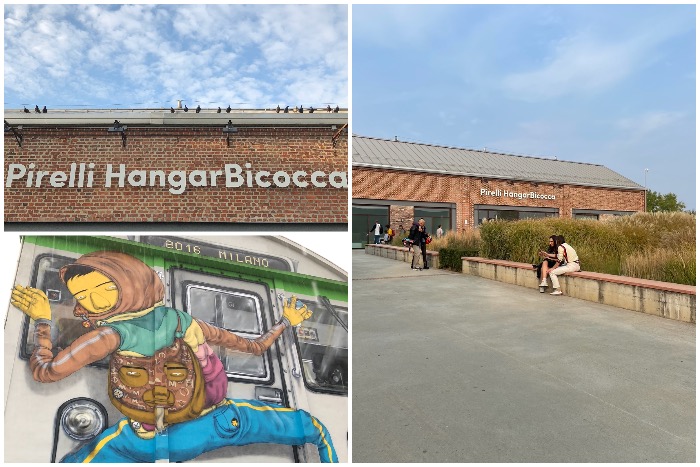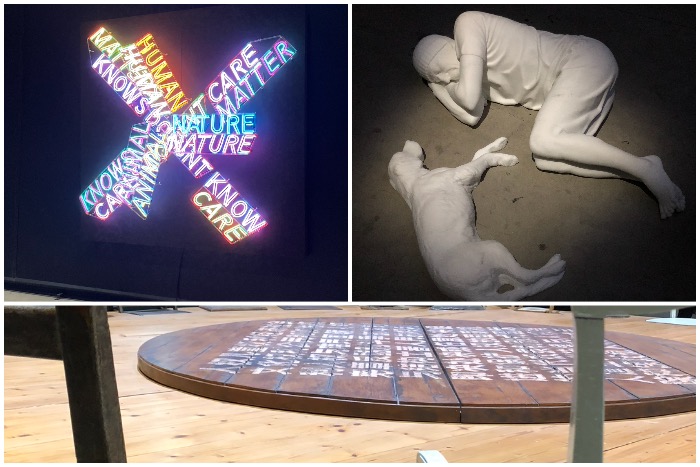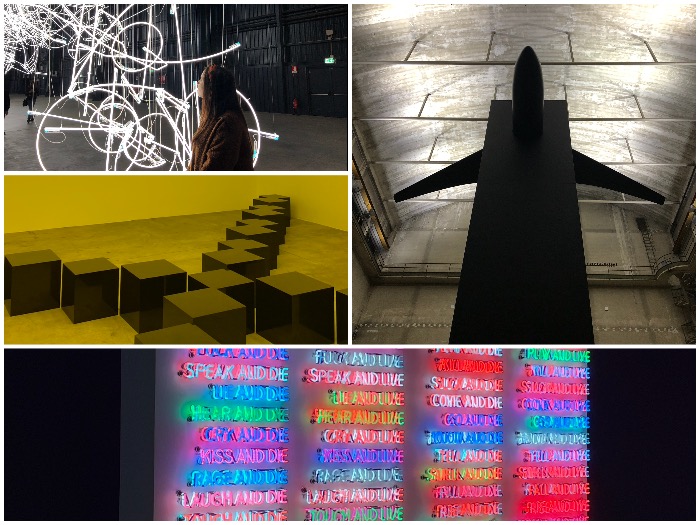
Pirelli HangarBicocca was founded in 2004 as a non-profit foundation for the promotion of contemporary art in the city of Milan.
Over the years it has become one of the most important centres nationwide dedicated to this type of art, so much so that it is considered a real museum.
Access to the permanent collection and temporary exhibitions is always free of charge. In addition, a series of cultural mediators facilitate the dialogue between the public and art in the various rooms.
Pirelli HangarBicocca: a free museum in Milan

THE HISTORY OF THE BUILDING
The building that houses Pirelli HangarBicocca is a converted historic industrial plant located in the Bicocca district, north of Milan.
The history of this place is closely linked to Breda, a company founded in 1886 by Ernesto Breda, who moved its headquarters to the Bicocca area in 1903. The beginning of the 20th century saw the district establish itself as one of the most important industrial centres in Italy. In addition to Breda, Pirelli, Falck and Marelli also moved their company headquarters to Milan Bicocca.
The Breda plant covered over 200,000 square metres and produced various types of machinery, including locomotives, railway carriages, boilers and agricultural machinery.
In 1955, a barrel-vaulted cubic building was added to the historic shed – a typical industrial building of low height and exposed brickwork.
A few years later, between 1963 and 1965, a 30-metre high monumental building was constructed to join the shed and the cubic building. Inside, the assembly and testing of high-powered electrical machines was held.
Todayʼs exhibition space at Pirelli HangarBicocca has maintained this threefold subdivision, naming the three parts that make up the building respectively “Shed“, “Cube” and “Naves“.
In the 1980s, the Bicocca district was the protagonist of an urban redevelopment process. The rise of university buildings, offices and private residences gave rise to the ‘Bicocca Project’ in 1986. The intention was to redevelop the old Pirelli factories. After years of neglect, Bredaʼs Ansaldo 17 plant was bought by Pirelli RE, which decided to convert it into an exhibition space for contemporary art in 2004.
CONTEMPORARY ART AT THE PIRELLI HANGARBICOCCA
The redevelopment of the former Breda plant has not distorted the building, but rather deliberately preserved its industrial appearance. Each of Pirelli HangarBicoccaʼs three exhibition spaces – Shed, Cube and Naves – is intended to host different works and installations. The Shed usually hosts temporary exhibitions by more or less emerging artists, while part of the Naves and the Cube are dedicated to exhibitions by established artists. Finally, about half of the space in the Naves houses the Hangarʼs permanent collection.
TEMPORARY EXHIBITIONS
Pirelli HangarBicoccaʼs main objective is to introduce the public to the most interesting forms of contemporary art. Every year it organises at least four temporary exhibitions (two in the Shed and two in the Naves + Cube) featuring emerging artists on the one hand and established artists on the other. Artists of the calibre of Maurizio Cattelan, Cerith Wyn Evans, Chen Zhen, Bruce Nauman and Ann Veronica Janssens have exhibited at the Hangar.

THE PERMANENT COLLECTION
A large portion of the Naves inside the Pirelli HangarBicocca is reserved for Anselm Kieferʼs monumental work The Seven Heavenly Palaces 2004-2015, on permanent display. The famous German artist has created seven concrete towers of varying heights (between 14 and 18 metres), which have various openings and seem to be barely standing upright. The huge, very dark hall is a surreal, at times almost frightening and ‘otherworldly’ place. In addition to the seven buildings, five large paintings complete the installation. These are Jaipur (2009), two works from the series Cette obscure clarté qui tombe des étoiles (2011), Alchemie (2012) and Die deutsche Heilslinie (2012-2013).
In 2016, a street art work was also added to the permanent collection of the Pirelli HangarBicocca. Located on the external wall of the Cube, Efêmero is the first large mural in Italy by the duo OSGEMOS (lit. “the twin brothers”) – pseudonyms of the Brazilians Gustavo and Otávio Pandolfo. Inspired by the buildingʼs history as a locomotive factory and the nearby railway line connecting Milan with Brianza, the two brothers chose an underground car as their subject.
The Pirelli HangarBicocca foundation is an unmissable stop for anyone visiting Milan who wants to catapult themselves into the best of contemporary art. I would like to remind you that this is one of Milanʼs free museums, and admission to all exhibitions here is always totally free of charge.
(This article was written in collaboration with Giulia Pianelli of Artefortuna).
AFTER THE PIRELLI HANGARBICOCCA I ALSO RECOMMEND THESE UNFORGETTABLE EXPERIENCES IN MILAN
Take a look at the house museums in Milan because there are some beautiful ones that you might not have known you could visit all year round.

